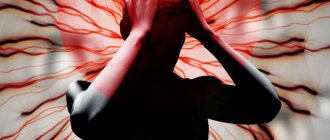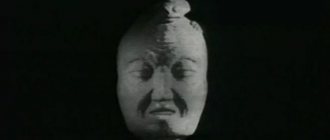08.07.2018
Fear is an emotion based on the fear of receiving physical or mental harm. Sometimes both types of damage are combined - a person is simultaneously afraid of both physical and subsequent moral suffering. The harm that causes such an emotion can range from minor to life-threatening. The objects of threat can be self-confidence, love, friendships, self-esteem, faith, etc.
Fear from a psychological point of view
Fear is an innate emotion that contributes to the preservation of the race. Some psychologists, such as A.I. Zakharov, defined this as something that is based on the individual’s instinct of self-preservation, where one of its useful properties is the protective nature of this emotion.
This feeling was defined as a state of painful experience by V. M. Leibin. William James equated it to the basic and one of the strongest instincts of an individual. Sigmund Freud divided it into 2 groups: phobia and fear. The first he considered was the process of pathological fear, that is, a constant feeling of anxiety and fear, regardless of the situation; “fear” refers to the fear of something specific.
The behaviorist approach to the psychology of fear was studied by John Watson, who identified certain stimuli that contribute to its appearance: blows and jolts at the moment of falling asleep, sharp sounds or loss of support. He called the rest only their different variations.
According to the scientist, fear can be both an innate and acquired feeling. In infancy, there is no fear of certain phenomena (fire, falling, etc.), so acquired fear is added to it. This type is formed on the basis of negative experiences that happened in the past. During the scientist’s research, it became clear that most fears in people are formed during the first year of life.
The idea of the emergence of a behaviorist approach was also developed by other scientists, such as B.F. Skinner. His idea of operant conditioning of fears showed that fears can arise, be maintained and strengthened as a result of certain events in a person’s life. Reinforcement is divided into both positive and negative.
A striking example of positive reinforcement would be a child who, as a result of escaping from this feeling, tries to find refuge in his parents. By asking for help and receiving their care, he develops a certain strategy, during which he will every time resort to the help of his parents in the event of subsequent potential danger.
In this case, it is very difficult to overcome this phenomenon, since the child receives positive emotions from his relatives and this increases some benefit from fear. If the desired care and attention can only be obtained in this way, then the child will sometimes even stimulate his fear in order to receive positive emotions.
What is fear?
Fear is an internal sensation that reflects a defensive reaction when experiencing real or imaginary danger.
In psychology, it belongs to the group of so-called negative or negative emotions - emotions that are based on unpleasant experiences or external influences. One type of fear is a phobia. This is an irrational, poorly controlled fear of an object, living creature or being in certain external circumstances. At the same time, a person tries with all his might to avoid contact with the source of his fear, even if it does not pose any objective threat.
Types of human fears
It is impossible to unambiguously determine the types and categories of human fears, since there is no generally accepted classification of them. Some scientists, such as D. B. Sadok and G. I. Callan, divide fears according to the degree of their constructiveness - those that pose a real threat and those that can be assessed as an inadequate stimulus to a certain stimulus, which can lead to psychopathology.
Fear of childbirth may appear based on stories told by someone with negative consequences (death of a child or mother), but it can only aggravate the process of giving birth to a child. The fear of being left in a burning house, in turn, stimulates reflexes, as well as other signs of fear, which help prevent such a situation, thereby adequately responding to certain stimuli.
Yu. Shcherbatykh divides fears into 3 types, which are more characteristic of a socialized modern person:
- natural fears associated with natural phenomena: volcanic eruption, earthquake, floods, etc. Fears of animals can be distinguished as a special group of natural fears, especially snakes. This subgroup is often associated with rational fears about death.
- social fears are associated with a person in society. This category displaces the basic needs of a person and puts a person’s social status in the foreground. Social fears are dictated by society and the herd instinct, and may not always be detrimental as a result. This category can often affect emotionally unstable individuals.
- existential fear generated by emotions about what is happening. The more a person thinks and worries about certain concepts, the greater the likelihood of aggravating the fear, or at least laying its root.
Feelings of fear are innate and can accompany us almost throughout our lives, but it is better to get rid of some of their types by analyzing their origin and understanding their impact on your life.
Causes and main aspects of fear
Fear is a powerful innate survival mechanism. From an early age, we learn to fear certain objects and phenomena of the world around us, and the threat can be real or imaginary. The concept of sources of danger allows us, through the emotion of fear and the actions that follow it, to avoid or minimize negative consequences in the form of harm.
Thanks to the emotion of fear, a protective action, if possible, precedes the onset of undesirable consequences. Sometimes fear occurs simultaneously with danger, for example, with a sudden electric shock. Pain is a factor that triggers the fear reaction, and the longer the pain, the stronger the fear, since the person has time to think about the degree of harm caused - how severe the burn is, how much blood has leaked, etc. Pain can also have the character of moral suffering, giving rise to the same emotion.
The emotion of fear is similar to the emotion of surprise, but differs from the latter in the following aspects:
- fear is always unpleasant and carries negative feelings, unlike surprise, which can be positively colored. It causes a cascade of vegetative stress reactions that accompany a state of horror: the skin turns pale and becomes intensely covered with sweat, tachycardia and palpitations are observed, stomach pain occurs, involuntary emptying of the intestines and bladder may occur, hands begin to tremble;
- fear can take over a person even when the danger is already familiar, and he knows that it will take place in the near future. An example would be a trip to the dentist or a speech in front of a large audience - a person has already pulled out teeth before and read a report to the commission, but an unpleasant feeling of fear haunts him the second and tenth time. Unlike familiar fear, surprise can only accompany sudden fear, for which a person did not prepare in advance and could not predict it;
- The duration of fear, in contrast to short-term surprise, is more significant. Surprise dries up and disappears as an emotion immediately after a person’s assessment of the situation that caused it. Fear can grow for quite a long time and does not reach its maximum soon, while the emotion is experienced even when its cause is clear and defined. For example, a passenger may tremble with fright throughout the entire flight, although he is well aware of the turbulence.
Since the intensity of the emotion of fear can increase from mild fear to real horror, a person’s behavior will also vary from active actions aimed at avoiding danger to total numbness, when fear literally fetters and binds hands and feet.
The emotion of fear can either go away on its own or transform into another emotion. Anger occurs in relation, for example, to the source of danger, as well as to oneself, who has become cowardly before the threat. If the damage continues for a long time, the person may react with despondency. The emotion of joy is experienced when a person has successfully avoided danger, and pleasure after experiencing fear is characteristic of the so-called. extreme sports enthusiasts - racers, gamblers, climbers and mountain stream conquerors who deliberately put themselves in a situation of danger.
Creation of fear - where does it come from?
Often fear is something we imagine. This is where similar quotes arise about its essence: “Fear shows us one world, and love another world. We decide which world is real..." - words of Louise Hay. There are also sayings about fear of this kind, that is, often existential - “fear has big eyes.”
Life without this feeling is almost impossible. In order to overcome it, you need to get rid of primitive fear, its primary sources.
The breeding ground for him is the inability to control his imagination. Intentional imagery can be positive for designers, writers, or artists. But when a person begins to believe in negative images or situations so strongly that it develops into fear, one must not only consign it to oblivion, but also question the very pretext of its existence, if there are good reasons for this.
The fear of abandonment, being alone, the fear of betrayal or the fears of children (darkness, heights, etc.) originate from somewhere. Often it comes from childhood. Children are very susceptible to the influence of the external environment, since their psyche is still unstable. Childhood fears can carry over into adulthood.
It is important to be able to understand the starting point of the appearance of this phenomenon in order to stop the process in the bud. It appears gradually. It can all start with anxiety and ordinary fear and develop into phobias and neuroses. It is generated by feeding it, events from life, negativity in the environment.
Fears are generated where they are given free rein. It can be difficult to exclude the possibility of its occurrence, but when understanding its existence, it is best to begin to fight not with its symptoms, but with itself. Do not underestimate the role of your imagination - thoughts and conjectures influence feeding this feeling properly in its favor.
It is worth remembering that it can be reinforced by itself under the influence of a negative stimulus. At the moment of trying to prevent it, the person unconsciously reinforces it. Therefore, read our article on how to suppress feelings of fear.
This is what the psychology of fear says about their varieties.
Psychology identifies the 29 most common forms of fear. They, in turn, are divided into 3 categories:
Delusional fears. The cause of their occurrence cannot be traced. For example, it is not clear how to explain a child’s fear of putting on socks. Such phobias often act as a sign that a person has some kind of mental disorder. Often such a person becomes or is already a patient in a neurosis clinic.
Overvalued fears arise on the basis of some ideas. Often such ideas become a kind of prism through which everything that happens is passed through. Usually some life situation affects a person so strongly that its meaning for him then changes dramatically.
Obsessive fears. A person begins to experience fear only under a certain combination of circumstances. Often there are fears such as:
- fear of climbing and being at heights (hypsophobia);
- fear of open spaces (agoraphobia);
- fear of closed and cramped spaces (claustrophobia).
It is not fear itself that leads to such disorders, but the fear of it. The personality itself mentally plays out the most unfavorable scenarios for the development of events. It is the possible consequences (pain, suffering, deprivation) that frighten her. And the strongest fears eventually become phobias.
How to understand the feeling of fear and what it is
To understand the feeling of fear, you should adequately assess the situation and how often it worries you. If there are hints that a certain situation and its harmful or negative results are scrolling through your head from time to time, or moreover, fear appears in a dream in the form of a nightmare, it means that it has crept deep. The fear of the unknown is nothing more than a figment of the imagination.
It is impossible to avoid negative thoughts, but it is important to evaluate their constructiveness. The lack of reasoned ideas why this or that situation can develop into a negative one means that you are controlled by fear.
A constant feeling of anxiety and fear is a signal that you should reconsider your life positions and begin to control your thoughts. Stopping thinking about the negative and focusing on the positive right away won't work, but it can be a good start to reducing the number of unreasonable worries that can develop into a phobia.
Understanding it is the first step towards its eradication. Accepting its presence and the fact that it interferes leads to an understanding of its nature: under what circumstances did it apply and how long has the fear been tormenting, what exactly does it prevent one from doing and is it worth it, they are afraid.
An objective assessment of the feeling of fear already suggests certain approaches to its destruction. The sooner the understanding of the meaninglessness of its existence comes, the more effective the process of eliminating it will be.
To understand it, you first need a banal acceptance of this feeling. Acceptance means that it interferes and the person wants to get rid of it. The second suggests that this is possible. What follows is a deeper study of it, both the positive aspects of its influence and the negative. If there is more harm than good, and the mind does not provide an adequate explanation of why it is scary and whether it really is so, then the process of eradicating it has already begun.
It is much easier to get rid of it by understanding its nature, type and type of origin. The constant feeling of anxiety and fear will gradually fade into the background after the questions: “why is this bothering me so much?”, “Is it really that scary?” etc. The main thing is to understand that you don’t need to build your plans around this feeling.
Fear or phobia: how to distinguish
To understand what controls a person: fear or phobia, you first need to determine the nature of his emotion. As already mentioned, fear is inherent in everyone to one degree or another. Fear is an integral part of the instinct of self-preservation, a natural protective reaction of the body, a kind of inhibitory mechanism. It is fear that makes a person more careful and vigilant.
If fear arises without any logical reasons and completely takes over all a person’s thoughts, this is already a phobia. Experts consider this condition as a form of neurosis. In this case, fear haunts the person, poisoning and complicating his life.
The significant difference between both types of fear is the nature of its occurrence. If natural fear is, as a rule, innate in nature, then phobia is always an acquired symptom.
Speaking about the types of fear, it is important to note that, in addition to justified fear (a manifestation of the instinct of self-preservation) and phobia, there is also a so-called unreasonable one, which is often also mistakenly perceived as a phobia.
Intensity of manifestation
Many experts call the intensity of manifestation one of the main differences between phobias and fears. According to this theory, phobias manifest themselves much more intensely than ordinary fear. In most cases, this is true, but if we are talking about unreasonable fears, then the intensity of their manifestation can sometimes even exceed the phobia. In addition, there are real ways to reduce the occurrence of a phobia attack. For example, a person suffering from claustrophobia can take a sedative pill, and a trip on the subway will no longer be the tragedy of his life.
Thus, the intensity criterion is not always appropriate for differentiating different types of startle. Instead, experts advise using other characteristics to distinguish fear, including unfounded fear, from phobia.
Awareness of the illogicality of fear
A study by K. Holstein proved that fear is based on fear. This is a reaction to a sudden, strong stimulus that requires the body to respond in a non-standard way.
One of the criteria for differentiating fear is a person’s awareness/not awareness of the illogicality and groundlessness of the threat that he is trying to avoid due to a feeling of fear. To make it clear what we’re talking about, let’s look at an example.
Let's say a person is afraid to swim in bodies of water, regardless of their type or depth. Ask him why he avoids bodies of water. If in response he tells, for example, a story about how he once almost drowned and now any body of water makes him feel very afraid, then you can be sure: this is an example of typical fear. That is, a person realizes why water causes him to panic. He is afraid of a repeat of the situation from the past. Often a similar thing can be observed in children, moreover, in situations not necessarily related only to water. From the outside, this behavior looks like unreasonable fear, but once you understand the reason for the fear, everything becomes extremely clear. In addition, unreasonable fear is characterized by situationality. It appears as a reaction-response to new or recurring situations. The reason for such fear is not difficult to find in the superficial layers of the human psyche. Being afraid of something, he simply realizes the reality of the threat.
If the reason for the fear of water is a phobia, then the person may never have found himself in dangerous situations in a body of water, but at the same time he is still afraid to swim. If you ask him about the nature of his fear, he will most likely answer that he is aware of the absence of real reasons for fear, but he cannot do anything about his emotions. Although it should be recognized that in some people a phobia can develop as a consequence of experiencing fear. For example, a person may have a panicky fear of cemeteries after a strong fright associated with this place or the deceased. However, not everyone’s fear will develop into a real phobia. Experts are convinced that this only happens when there is favorable soil in the deep layers of the human psyche. That is, the easiest way to understand what worries a person: unreasonable fear or phobia is to ask him why he is afraid.
Nonverbal reactions
As a rule, people suffering from a phobia speak uncertainly and confusingly about the objects of their fear, and their nonverbal behavior only confirms this (the person sweats, his heartbeat quickens, trembling appears, breathing becomes difficult, etc.). At the same time, in the conversation he admits, although not entirely confidently, the absence of a real reason for fear, but, nevertheless, he still panics.
Obsessive fear or phobia
Obsessive fear is often compared to phobia, but there are clear differences between these types of emotions. An obsessive state usually manifests itself in the form of anxiety - groundless and illogical, which resembles a phobia. In turn, many phobias are also often obsessive in nature. However, a phobia is a fairly intense fear caused by a trigger. Obsessive fear manifests itself less intensely, but in this state a person is afraid of almost everything. This is the main difference between these emotions.
Pathological fear or phobia
Pathological fear is quite easy to distinguish from a phobia. A person prone to pathological fear constantly or over a long period of time experiences severe anxiety about a variety of life events. As a rule, this type of fear has no basis in reality and is the fruit of a person’s imagination and excessive emotionality. With pathological fear, a person seems to be “trying on” a potential threat and its consequences.
Fear of physical and mental pain
Since fears are divided into subtypes, this means that their nature and methods of destruction differ. Fear of physical pain is not characteristic from birth; it is innate, as it is directly related to the central nervous system. The pain that our body feels is one of the incentives for self-preservation. An individual who does not feel pain is less susceptible to the fear of its existence, which means that his instinct of self-preservation is less pronounced.
Fear of mental pain can only appear as a result of a negative experience. People's fears and fears are often just a figment of their imagination. A sad story conveyed through literature or spoken word is nothing more than someone's bad experience. Such experience does not always mean absolute defeat in certain situations (due to the risk of investing finances in some business or in a love story).
In most cases, this means that the person was either not competent enough in his actions or did not fully understand certain risks.
Scary stories about evil wolves that are told to children from childhood carry not only a negative semantic load: they are afraid of wolves and should not go into the forest, but they also teach them to be careful. But often this can simply cause natural fear, which in turn develops into panic.
Mental fears are more dangerous than physical ones, as they are formed under emotionally oversaturated impressions, often even those of others. They are classified as acquired existential fears.
As they progress, they often suppress the psyche and negatively affect the individual’s body. The mobility of human reaction processes only worsens, which can lead to neuroses.
“Mental pain” is a process when depression, depression and melancholy begin to dominate a person’s life. Their severity is equated to physical pain, so mental pain sometimes torments much more than physical pain.
The fear of experiencing such feelings reinforces their very essence.
Signs of fear
The main symptomatic manifestations of fear are the following:
- Physiological changes: increased sweating, increased heart rate, dilated or constricted pupils, urinary incontinence, fearful gaze.
- Violation of the emotional background: silence, passivity, refusal of certain actions, solitude, uncertain behavior, speech defects, stooping, fidgeting with limbs. Such symptoms can lead to the development of depression and anxiety disorders. In some cases, there is a tendency to commit suicide.
- A decrease in muscle tone occurs in dangerous and unforeseen situations. Fear causes numbness in the limbs. As a result, the person experiences weakness, which leads to severe dizziness and faintness.
- Trembling limbs are caused by strong muscle spasms that occur when there is excess energy.
- Redness or paleness of the skin causes increased blood supply to the heart and muscle tissue.
- Hoarseness of voice manifests itself with rapid heartbeat, dry mucous membranes in the oral cavity.
The feeling of fear is a natural reaction of the individual that occurs under unforeseen and threatening circumstances. With a pronounced form of the negative state, an adaptive reaction occurs. A person experiences fear, horror and panic under a variety of circumstances. Excessive worry and severe anxiety lead to impaired concentration and memory. To reduce the symptoms of fear, you will need to take medications prescribed by a specialist on an individual basis.
How to overcome panic fear
The meaning of the word panic from Greek is “sudden”, “senseless”. Hence - panic fear - something like a phobia, which was initially in the form of fear, but then grew into a strongly reinforced feeling of fear.
If natural - mobilizes a person’s abilities, during which it becomes easier to avoid some unpleasant or harmful processes, then panic, in turn, suppresses the state of the psyche. A decrease in capacity can be caused due to a discrepancy between the conditions of reaction to a particular situation. As a rule, sensitive individuals are subject to panic fear.
Scary stories give rise to fear of heights, childbirth, death, etc. I work in fear rooms in such a way that the unknown is often frightening. Anything can happen in the unknown, and especially impressionable people can even get a heart break (one of the extreme cases).
In this regard, neuroses may arise, which lead to a series of somatic symptoms, such as suffocation, rush of blood to the head, chest pain, until loss of consciousness. Sleep disturbances and persistent nightmares and insomnia may begin.
Sudden panic fear complicates life and can appear completely unexpectedly.
If the process is started and it turns into panic, then the root of the problem should be sought immediately. But, if a person cannot overcome it on his own, which can be extremely difficult, then he should contact a specialist.
Neurotic symptoms are treated with both psychotropic drugs and psychotherapy.
The first method comes down to taking benzodiazepines, which are the most effective. The process of using them should be short-lived, as this can lead to addiction and complications.
The second method is based on psychotherapist sessions and long-term psychoanalysis, which can help both the patient and the doctor deal with the problem. Sometimes both methods go hand in hand to solve a problem faster.
This means that if panic takes hold of you from time to time, then you should immediately solve this problem, as this can lead to a number of somatic symptoms that not only reduce capacity, but also suppress a person’s mental health.
Panic syndrome
Definition.
A characteristic feature of panic syndrome (SP) is the sudden and unexpected appearance of a feeling of irresistible horror with accompanying somatic manifestations in the form of shortness of breath, palpitations and semi-fainting. These symptoms and signs are similar to those that appear during excessive physical exertion or in a threatening situation.
Prevalence and epidemiology.
SP occurs with a frequency of 1-2% of the general population, and in women it is 1-2 times more common than in men. The disease usually begins between the ages of 17 and 19 and shortly after the age of 20. Quite often, SP is inherited in families and is often accompanied by affective disorders. If a given person is diagnosed with SP, almost .18% of their immediate family may also be diagnosed with this disorder. Moreover, studies on twins have revealed a higher incidence in monozygotic twins, which confirms the genetic basis of this disease.
Clinical manifestations.
In typical cases, SP begins quite suddenly without warning symptoms and without any stressful situations, for example, when entering a store, while driving your car, or simply while working at your desk. The patient's face turns red, a feeling of emptiness arises in the head, the patient becomes covered in sweat, he feels a feeling of horror, the inevitability of an impending catastrophe, and he is overcome by gloomy forebodings. Shortness of breath occurs with a feeling of lack of air, the patient feels a rapid heartbeat and pain in the heart area. The latter can be so intense that patients mistake them for a myocardial infarction or they think they are dying. Symptoms of SP reach their maximum 10 minutes after their onset and disappear within 20-30 minutes. Many patients, when experiencing AS for the first time, usually refuse the help of others and go for help to one or another medical institution, but on the way there the symptoms somehow go away on their own. After SP, there is usually a feeling of weakness and fatigue, and the patient may even fall asleep.
Diagnosis of panic syndrome
A. The presence of at least three attacks of panic syndrome within 3 weeks under circumstances excluding physical overload or life-threatening situations. The attacks are not caused by any situational fears
B. Attacks are preceded by a clear period of anticipation of fear, and at least four of the following symptoms must occur during the attack:
1. Shortness of breath
2. Feeling of heartbeat
3. Pain or discomfort in the heart area
4. Feeling of suffocation, lack of air
5. Systemic or non-systemic dizziness, instability when walking or standing
6. Feeling of unreality
7. Paresthesia (tingling in the hands and feet)
8. Feeling either hot or cold
9. Increased sweating
10. Condition close to fainting
11. Minor or major trembling
12. Fear of death, fear of going crazy, feeling of losing control over your actions.
Complications.
After repeated attacks of panic syndrome, most patients develop a fear of having similar attacks again, and they try to avoid situations in which these attacks occurred in the past. Some patients develop agoraphobia (fear of open spaces, squares and wide streets), and they experience fear both in public places and when left alone. If the patient is not treated, then repeated attacks of panic syndrome and agoraphobia lead to a change in the patient’s lifestyle: he begins to think only about how to avoid situations that can provoke an attack of panic and fear. Often, such patients literally do not leave the house for several weeks (months): they are convinced that as soon as they leave their home, a panic attack will immediately arise.
Other complications of panic syndrome include the development of major depression, the risk of suicide, the development of cardiovascular pathology, and dependence on drugs or alcohol. The state's losses as a result of the inoperability of such ballrooms and the costs of maintaining their health amount to more than $100 million per year.
Laboratory results.
Intravenous administration of lactate usually provokes an attack of panic syndrome in persons susceptible to it. Currently, this procedure is not used in clinical practice. One study using positron emission tomography demonstrated decreased blood flow in the left parahippocampus during panic attacks.
Differential diagnosis.
Many patients suffering from attacks of panic syndrome complain of pain in the chest (in the heart area, in particular), a feeling of palpitations and arrhythmia. So in such cases it is necessary to make a differential diagnosis between fear syndrome and organic cardiovascular pathology. It turned out that this question is not so simple, since among patients with panic syndrome, many also have prolapse of the leaflet(s) of the left atrioventricular (mitral) valve. And yet, as a rule, in patients with panic syndrome, organic pathology of the cardiovascular system is usually not found. In addition, it is necessary to exclude hyper- and hypothyroidism, catecholamine-secreting pheochromocytoma, complex-partial seizures of epilepsy and hypoglycemia. Attacks of panic syndrome can also be triggered by the use of certain medications (phenamine, cocaine, caffeine, sympathomimetic drugs used as nasal drops) or, on the contrary, their abrupt withdrawal (alcohol, barbiturates, opiates, tranquilizers). '
Etiology and pathophysiology.
The etiology of panic syndrome remains largely unclear. In any case, the interaction of many psychological and biological mechanisms is important.
Psychological factors.
From the point of view of psychodynamics, a state of fear and anxiety is a response to the life-threatening and urgent appearance in the stream of consciousness of painful and unacceptable thoughts, impulses or desires for the patient, i.e. there is a psychological conflict) associated with the past or present. So the alarm reaction in this case is an attempt to mobilize and prevent danger to one’s own self.
Physiological factors.
Clinical and experimental data indicate the involvement of noradrenergic neurons in the body's response to SP, especially those located rostral to the locus coeruleus in the upper part of the brainstem. Evidence points to hyperactivity of noradrenergic pathways as a leading link in the pathogenesis of SP. Firstly, the clinical manifestations of this syndrome are identical to those. which occur with sudden and sharp stimulation of beta-adrenergic receptors; secondly, the β-agonist isadrin and yohimbine (lohimbine), an adrenergic receptor antagonist that increases noradrenergic function, cause signs and symptoms that mimic attacks of SP; thirdly, clinical facts confirm that noradrenergic β-blockers, such as anaprilin (propranolol), are successfully used to correct the state of pathological anxiety.
It has been established that attacks of panic syndrome in susceptible individuals can be provoked by intravenous administration of sodium lactate. Moreover, such provoked attacks are practically indistinguishable from spontaneous attacks of SP. However, in healthy individuals who do not suffer from SP, it is usually not possible to provoke attacks with intravenous administration of sodium lactate. It is also interesting that in those individuals in whom attacks of SP can be stopped with antidepressants, they cannot be induced with sodium lactate infusions. Although the mechanism of action of lactate in this case is unclear, these data may have diagnostic value and provide a good model of anxiety for further clinical studies. In any case, there is no doubt that the pathogenetic basis of SP is a genetic predisposition (vulnerability) to pathophysiological changes in the body. Over time, the relationship between attacks of SP and changes in environmental conditions becomes more obvious. Psychological conflicts play a special role in this. In any case, to understand the essence of anxiety and fear syndrome, in-depth research in the field of genetics, as well as the study of biological and psychological factors, is necessary.
Treatment.
A generally accepted treatment program for panic syndrome usually includes both pharmacological and psychotherapeutic effects on the patient. First of all, they try to block the attack with pharmacological agents, usually with the help of tricyclic antidepressants or monoamine oxidase inhibitors. The effectiveness of these drugs is 80-90% in the treatment and prevention of spontaneous attacks of SP. The new "anti-insurance" drug alprazolam in high doses is as effective as antidepressants, but it has fewer side effects and its effect lasts for 1-2 days. Other benzodiazepines are ineffective. Unfortunately, the effect of antidepressants may only appear 4-6 weeks after the start of treatment.
p-blockers, such as anaprilin (propranolol) or atenolol, usually stop the peripheral (autonomic) manifestations of SP, but do not eliminate mental fear as such and, in addition, can aggravate depressive symptoms. Clonidine also relieves symptoms of a panic attack, but its effect is usually only temporary, and the disease usually returns when the drug is stopped.
Some patients with PS, especially those who suffer from agoraphobia, are indicated for psychotherapy. There are conflicting opinions regarding specific forms of psychotherapy, but, as a rule, those in which the doctor tries to understand the cause of anxiety and encourage the patient to face the “frightening” situation more boldly are more effective.
Treatment of fears
To treat fear, a specialist diagnosis should be performed. From the above, we can conclude that it is divided into congenital and acquired. If the problem is not natural, but social or existential fear, then it can be eliminated using several methods.
Ways to eliminate it:
- Psychotropic drugs
- Psychotherapy (specialist help)
- Breathing techniques
- Imagination control
- Meditation and other practices
- Face your fear
The first method is most often used for neuroses, the affect of fear (with strong excitement and loss of self-control). Such cases are extreme, so treatment should be immediate.
Psychotherapy is used for the ability to understand and recognize one’s fears, the concept of their original source and eradicate them in the future.
It is important to maintain deep breathing to calm yourself down. It is rapid breathing that precedes fear, so bringing it into the right direction will help you calm down.
“7/11 Technique” is called that because of the score. Its essence is this: take a deep breath, counting to seven, and exhale deeply, counting to 11. It is not necessary to use these exact numbers, the main goal is to increase the time for exhalation, in comparison with inhalation.
The first thing that gives rise to fears is the limitless possibilities of our imagination. On the one hand, its immense possibilities can benefit people of certain professions, but on the other hand, their reinforcement comes precisely from these same opportunities.
Controlling the imagination is the path to exploring oneself and understanding whether what it seems is as scary as it seems. Of course, it is impossible to completely control your thoughts, but you can limit their negative flow by surrounding yourself with positive information and limiting access to negative information.
Meditation is a more extensive practice than controlling the imagination and is one of the auxiliary techniques for achieving this goal.
The Austrian psychologist and psychiatrist Viktor Frankl proposed a direct meeting with them as a treatment. Fear of closed spaces means you need to be there more often, arachnophobia means holding a spider and repeating the procedure several times. Of course, all this should happen gradually and under the supervision of a specialist with his recommendations, but this should already give positive results the second and third time.
How can I get rid of it once and for all?
Looking fear in the eye is what you need to do to begin the process of eradicating it. To avoid its aggravation, it is worth thinking about their origin and influence on your life.
Fear has big eyes - something that is always worth remembering. It is not he who rules you, but your imagination. The more you think about it, the more it affects your life, and at the same time you feed it.
Scary stories are partly interesting, but they frighten those who are especially impressionable. Psychology will tell you how to deal with it.
The study of neurochemistry and physiology shows that it has much more negative effects on the human body, since social and cultural attitudes towards humans have increased, which has contributed to the generation of new fears. They began not only to dull some reactions, but also to make a person unsure of himself, nervous, etc.
Natural fear prevailed among our ancestors, therefore, when they saw it, the work of the muscular system predominated: they either fought the enemy or fled.
Nowadays, human fear is of a nature that is less pronounced in animals; this includes fears such as: losing loved ones, loneliness, losing social status, which suggest that the primary needs of a person are not only the ability to sleep, eat and breathe. The range of human needs has increased, and with it the number of related problems.
Since this feeling is one of the basic emotions, its harm should be noted if there are groundless reasons for concern.
Try to comprehend its harm and panic (senseless) nature, if any. Accepting this will prompt treatment measures. If there is no way to fight it except medically and the body is not able to overcome it on its own, you should resort to the help of a psychotherapist and psychotropic drugs. The second will help to dull this feeling at least for a while.
Don’t be afraid to ask for help, because he drives you into certain limits and does not give you the opportunity to live in peace. Its effect on the body is much stronger than it seems.
How to overcome feelings of fear
Fear itself is an unpleasant feeling that takes away excess energy. To understand how to deal with it, you need to determine its original source.
If the nature of fear is sudden in a certain situation, and does not accompany you constantly (fear of heights or darkness, fear during childbirth), then there are certain ways to eliminate or neutralize it for a while.
Psychologists often recommend getting rid of the negativity around you by limiting the following information:
- Unsubscribe from negative mailings, channels and groups (on social networks, etc.)
- Limit your ability to communicate with people who fuel it (if there are any).
- Try to eradicate bad thoughts in the bud. As soon as they are born, drive them away.
- Try to read more positive information.
- Keep conversations about good things with your interlocutors.
- Surround yourself only with good emotions, pleasant words, and kind deeds.
Observe fear to understand what it does to your body at that fateful moment. Consider its negative impact on your body and accept the fact that it is bothering you.
Try to act as if you are not afraid. Feel this for yourself and think about which position you look more advantageous in: the first or the second. Try to convince yourself that there is no reason for fear, it was once invented by your imagination. Tune in to positive emotions and believe that the steps listed above will help you in the fight against it.
Remember what fears you were able to overcome earlier in order to feel the positive emotions that you experienced. Realize their significance in your life, because every step to fight it is an approach to a small victory
Fighting it by directly interacting with it will be much more successful than trying to escape from your thoughts. The more we run from ourselves, the more phobias can overtake us.
Fear and stress
Fear is an integral part of our life. Accompanies us in many significant moments - in the process of making important decisions, when passing exams, during hiring. Therefore, it is something completely natural, and even necessary, since it can mobilize us to action.
It happens, however, that anxiety does not go away along with a stressful situation. For some people, it becomes a “everyday companion”, causing a number of somatic disorders.
In many life situations we experience anger, fear or despair. However, different factors can cause stress in different people. Fear is a feeling of anxiety, nervousness and tension. Its source can be stressful situations; however, it happens that the causes of fear are not fully known to the person who feels it.
Stress in small doses motivates. Thanks to him, we develop our ambitions, we achieve better results in our work, we avoid dangerous situations. And severe, prolonged stress can be very harmful. It deteriorates our mental and physical health. As a result, it can lead to decreased immunity and the development of cardiovascular diseases and depression.
Why you shouldn't be afraid when you're scared
The concept of fear and its essence is innate for us and grows with us, but the types of this feeling that affect a person’s life often differ depending on the methods of their acquisition.
It is most difficult for more sentimental individuals, since the role of influence on them increases due to the peculiarities of their psyche. Perceiving everything at least at the level of feelings, they are less aware of the objective influence of fear on their lives.
It can be divided into several types, depending on the approach to studying them:
- According to the degree of their constructiveness - those that pose a real or imagined threat.
- Natural, social and existential. The first type was inherent in our ancestors - fear, which is directly related to natural processes in the external environment that can adversely affect a person (earthquake, poisonous animals, etc.). Social is associated with the fear of losing a certain social status in someone’s eyes. The mechanism of existential fears behind Franklin is simple: what a person fears, the person begins to be afraid and it begins to torment him.
In the fight against them, you can resort to various methods, but the main thing is to look your fear in the face. The more you accept it and consider its negative effects, the more likely you are to eradicate it.
If understanding fear is possible without receiving outside help, you should use this opportunity. Otherwise, there is the help of a psychotherapist , psychotropic drugs , breathing techniques , control of the imagination , meditation and other practices.
The ability to overcome your fear is based on the ability to directly pretend that there is no reason for concern.
You should also resort to surrounding yourself with all kinds of positive information and exclude receiving negative information through the media, your relatives, friends, etc.
Constant feelings of anxiety and fear can be overcome. If you are not afraid to admit its presence and adequately assess its harm. A long-term analysis of your fears will help you look at them from a different angle, then there will be many more opportunities to get rid of them.
Don't be afraid to face your fears, and you will feel much better after getting rid of what has been controlling you for a long time.
How to get rid of fear?
You can start confronting your fears and phobias on your own. For this purpose, a number of tips and recommendations have been developed. However, you should not expect quick results - it is a long journey that always starts small.
AWARE technology
One of the effective ways to get rid of fear is to study and accept it. For this purpose, a special AWARE (awareness) technique is used. This acronym stands for:
- Accept - recognition. Acceptance of your fear, a kind of recognition to yourself. Often, already at this stage, a person’s quality of life improves significantly.
- Watch - observation for the purpose of which you can keep a so-called “alarm diary”. It should record all thoughts and sensations that accompany the episode of fear, factors and situations that provoke or aggravate it.
- Act - action. Control of behavior, it should be as if everything is normal, even if fear is present. For example, you should continue to go to the place that causes unreasonable fear. This helps suppress an overly emotional response.
- Repeat - repetition. The previous points should be repeated on a regular basis, even if the first attempts seem unsuccessful.
- Expect - expectation. Confidence in your abilities and the fact that fear can be controlled gives you even more self-confidence and helps you master your phobias.
Proper nutrition
High blood glucose levels are associated with increased feelings of anxiety. Therefore, you should avoid large amounts of carbohydrate foods in your diet, giving preference to fresh fruits and vegetables.
It is also recommended to limit the consumption of strong tea and coffee, as they are rich in caffeine, which can increase the level of emotional arousal and anxiety.
Quitting alcohol and smoking
Despite the popular habit of drinking and smoking “for courage,” alcoholic drinks and tobacco products increase the level of arousal of the nervous system, thereby increasing anxiety and fear.
Sports activities
Sports and exercise force a person to concentrate, which allows him to take his mind off fears and worries. Also, being in good physical shape gives additional self-confidence, which helps in the fight against internal worries.
Relaxation
One of the simplest approaches to counteracting fear is relaxation techniques. Even a simple deep breath and exit helps you gather yourself and take control of the situation. You can also try to imagine yourself in a pleasant, relaxing place.
Listening to your favorite music helps many people. In the long term, massage, yoga, tai chi and meditation can be effective.
Summarizing
When you understand the essence of fear, you come to the realization that it is very dangerous to be in such a state. If you are constantly afraid, or you have constant phobias, then you urgently need to stop your suffering. Why are some people afraid and others not?
Because they have a different degree of perception. To overcome your short-term or permanent fears, you need to undergo a course of psychotherapy. But first you need to consult with a psychologist and conduct a basic diagnosis.
You need to look fear in the eyes and overcome this feeling within yourself. For this to happen, all it takes is a little desire and readiness for self-development.











